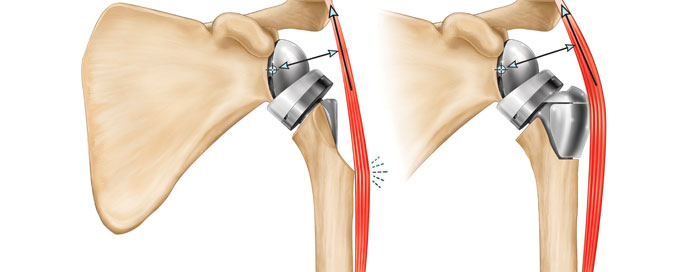Services / Dr. Ravi Bhanushali

Reverse shoulder replacement is a surgical procedure designed to address severe shoulder arthritis, irreparable rotator cuff tears, or certain complex fractures of the shoulder. Unlike traditional total shoulder replacement where the ball is replaced with a metal implant and the socket with a plastic component, reverse shoulder replacement reverses this configuration. In this procedure, the ball portion of the joint is replaced with a metal socket, and the socket is replaced with a metal ball. This reversal of the joint mechanics changes the biomechanics of the shoulder, allowing other muscles, such as the deltoid, to compensate for the loss of function of the rotator cuff muscles.
Here’s an overview of reverse shoulder replacement:
Indications: Reverse shoulder replacement is typically recommended for individuals with specific conditions, including:
Preparation: Before the surgery, patients undergo a thorough evaluation, including imaging studies such as X-rays, CT scans, or MRI to assess the condition of the shoulder joint and surrounding structures. Patients may also undergo pre-operative tests to evaluate their overall health and fitness for surgery.
Recovery and Rehabilitation:
